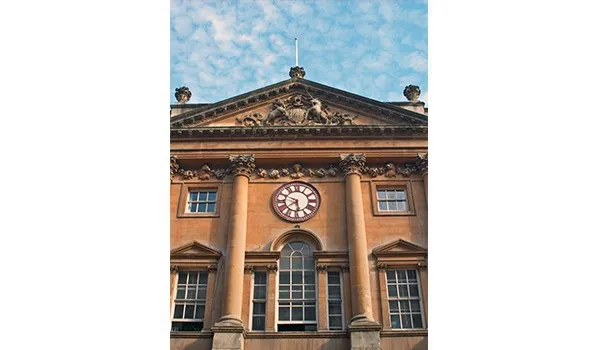Greenwich Mean Time is the yearly average (or ‘mean’) of the time each day when the sun crosses the Prime Meridian at the Royal Observatory in Greenwich, London. Astronomer Royal John Flamsteed developed the concept of Greenwich Mean Time in the 17th century. In the 18th century, British sailors began to keep a chronometer on their ships set to Greenwich Mean Time, to help them calculate longitude.
Before the introduction of the railways in the 1840s, there was no standardised time in Victorian Britain. The regions abided by their own ‘local time’ which was reckoned by the sun. The further west you lived, the later your day started. So Bristol, for example, was just over ten minutes behind London.
When train journeys began to link all corners of Britain, timetables needed to be drawn up using one standard time rather than a plethora of local ones. Greenwich Mean Time (GMT), known as ‘railway time’, began to be adopted across Britain.
The first rail company to adopt Greenwich Mean Time was the Great Western Railway in November, followed by the Liverpool & Manchester Railway in 1846; the Caledonian Railway in 1847; and London and South Western in 1848.
However, the concept of Greenwich Mean Time was difficult to understand when most people still relied on church bells to tell the time, or sundials scratched onto church walls that had served communities for centuries. Few ventured far from home because travelling any distance was arduous and expensive.
Letters in The Times newspaper reveal the difficulties many had in adjusting to Greenwich Mean Time. One writer wrote: “Sir – Much confusion as to the distinction between Greenwich or railway time and local mean time would be avoided, and much instruction diffused, if cheap, popular maps of Great Britain, such as common school maps and those of ‘Bradshaw’ and the various other railway guides; were ruled with meridians at every 1¼ degree from Greenwich, corresponding to five minutes’ difference of time.”
Another traveller wrote about the feuds between the Great Western and Birmingham & Bristol railway companies after Birmingham & Bristol refused to adopt Greenwich Mean Time, saying he had missed a GWR connection at Bristol because it departed five minutes earlier than advertised on the Birmingham & Bristol timetable.
Many towns in Britain resisted adapting to Greenwich Mean Time, with city fathers keen to protect their traditional time in the face of what were perceived as aggressive rail companies. In Exeter, the Dean of Exeter Cathedral was reluctant to change because the cathedral clock had always been the principal timekeeper for the city. Compromise was eventually reached when some clocks were fitted with two minute hands, one displaying ‘railway time’, the other ‘local time’.

By 1855, most public clocks in Britain used Greenwich Mean Time. In 1880, the Statutes (Definition of Time) Act made Greenwich Mean Time legal throughout Great Britain (although the Isle of Man, Jersey, Guernsey and Ireland adopted it later).









